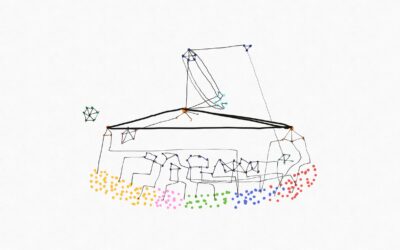It was a cold, foggy Wednesday morning. I was with Jaysingh*, one of our field staff at Swasthya Swaraj. We were on our way to visit the schools and to collect growth monitoring data of under-five children in one cluster in Kerpai panchayat. After visiting all the villages, we reached Dengen village’s Swasthya Saathi’s (community health worker) house.
As we had left very early in the morning, we hadn’t had any food. Our Swasthya Saathi offered fresh roasted corn and we munched down 4-5 each. Within minutes, I knew what was happening. The bowel sounds from my stomach were growing stronger and I had to find a toilet. Even though it wasn’t my first time relieving myself in the open, this was the first time I had to excuse myself to find a place. Swasthya Saathi got the cue on seeing my face. She handed over a small vessel filled with water and showed me a route.
I sprang in that direction and found a place behind a tree. As I was relieving myself, I saw a toilet constructed under the Swachh Bharat Mission to my left. After my job was done, out of curiosity I went around the toilet only to find it being used as a storage space.
In the following week, I happened to talk to my mentor Dr. Aquinas, founder of Swasthya Swaraj, about open defecation and how it might create health problems. After hearing me out, she dropped a surprising comment that open defecation as I think is not a major issue in our villages. People defecate in a vast open area and the population is very scarce hence the area would not get saturated with human waste that it will not decompose it.
For weeks, I could not sit with this fact. Initially, I was in complete disagreement and denial. Simultaneously I was also trying to understand how this popular belief is untrue. Reading and talking about open defecation only made me realise how polarised my views are and how curiosity has helped me encounter interesting and mostly surprising perspectives.
This is part two of a two-part series to explore the evolution of toilets in the world and other alternative options to wet toilets. The first part can be read here.
How water closets became the norm?
For the most part of human civilisation, we have handled human waste in dry form. Up until the 1800s, it was common practice to cover it with earth or to dump the chamber pot in the streets or cesspits. As the cities around the world became crowded, there were more disease outbreaks because of dumping untreated waste in the open. For the convenience of the users and to avoid contact with raw sewage, we began designing systems that will take human waste away without contact. Slowly and steadily the water closets became the norm. We became comfortable with the fact that with the press of a button, the shit disappears.
My quest to understand why open defecation is not a serious issue led me to Anuradha and Krishna. They are architects, who later started working intensely for the education of children from disadvantaged backgrounds.
“Just because we flushed it in our house, the problem is not gone. Waste should be converted into resources”
said Mr. Krishna
Is there an alternative?
They have installed and have been using dry toilets in their school premises – Thulir in Sittilingi, Tamil Nadu. “For bacteria, cow dung is the most ideal. It is not toxic and it’s a lot easier to handle and convert into manure. Manure made out of chicken droppings on the other hand, when used in excess can actually kill your plants. Human manure is quite tricky to handle but can be an excellent manure. It has an excessive amount of nitrogen. By adding carbonaceous materials like dry leaves, agriculture waste in the powdery form will improve the decomposition process. In the Tribal Health Initiative (THI), Sittilingi we use husks of turmeric. Ash, which is commonly found, can also be used.” THI is a non-profit organization working to provide quality healthcare at an affordable rate.
Dry toilets has two levels – (i) a toilet on the top and (ii) a composting unit underneath. After using the toilet, a bit of dirt and carbonaceous material is shovelled down the hole to cover the waste and block the foul smell. More importantly, it aids the decomposition of the excreta. A reasonable quantity of water is also to be present for the decomposition process to happen. Anu and Krishna have been using dry toilets in their house for years now. Though it might take some time to get the right balance of carbonaceous material to be added to keep the odour and flies away, there are not many complications to adapting to the dry toilets. Communities in Ladakh have been using dry toilets for a long which is nudged by the severe water crisis in the region owing to the scanty rainfall and huge influx of tourists.1
How are dry toilets beneficial? What is the issue with water closets?
Globally, if only agricultural land is considered, 38% is degraded.2 The two main causes of degradation are loss of topsoil from water erosion and fertility decline. Human excreta is shown to have a good fertilising potential, providing essential plant nutrients as well as organic matter contributing towards building soil structure.3 Krishna told an interesting story of how,
When China was opening up its economy, it did not have enough resources to invest in fertilisers. The farmers took up a campaign of building toilets on highways and invited people to use them. They then used the human excreta as manure which got recycled onto agricultural land. Human excreta helps to increase the grain yield and soil quality and partly closes the nutrient cycle again, thus minimising artificial aids of chemical fertilisers.
He further added that by pouring down water or using the flush in toilets, we are only complicating it. For us, ‘out of sight, out of mind’ has been the attitude with respect to sewage. What happens after the flush is most often neglected. At present, the water closet (WC) flushing standard in India is 10 litres per flush and 6 litres per flush for the low flush options.
Water closet flushes in Indian cities and towns literally flush down the drain large quantities of mostly treated water daily. To illustrate the enormous wastage of water involved (which is treated water in most Indian cities), in Delhi about 200 litres of water are literally flushed down the drain by each household daily amounting to a staggering 348 mld (million litres per day), or about 20% of total water distributed!4 Of the water available on Earth, 97% of it is in the oceans and 3% is fresh water. Of which only 1% is available for human use. In an era of water scarcity, how wise would it be to use treated good water for flushing?
The conversion of human excreta into manure is through the decomposition process. Composting may be of two types based on the decomposition process – aerobic and anaerobic. While both rely on microbial action, aerobic decomposition uses oxygen while anaerobic decomposition does not.
- Aerobic decomposition is the most common process in nature. It requires large amounts of oxygen, sufficient moisture content, and favourable temperature. Of particular importance is the C:N ratio. In this process, aerobic microorganisms break down organic matter and produce carbon dioxide, ammonia, water, heat, and humus, the relatively stable end product. Even though organic acids are produced in this process, they are further broken down due to the presence of oxygen.
- Anaerobic decomposition occurs where oxygen (O) is absent or in limited supply. Under this process, the microorganisms produce harmful gases like methane, organic acids as intermediate products. Due to the absence of oxygen, they are not further broken down. Moreover, the process usually takes longer than aerobic composting. These drawbacks often offset the merits of this process which is little work involved and fewer nutrients lost during the process.5 By pouring excess water, we are creating a conducive environment for anaerobic decomposition.
This water mixed with human waste is then transported through the pipes to the sewage treatment plants. In these sewage treatment plants, anaerobic decomposition takes place. Millions of money is pumped into the installation of sewage treatment plants, an elaborate sewer network, and expenses of regular maintenance and operations of these systems. Yet every year almost 80% of the world’s sewage enters the ocean untreated. Untreated sewage pollution is a global problem with global consequences.6
The dry toilets can be especially useful in deserts, rocky areas, and in flooded areas where the water table is high. Adopting dry toilets wherever possible would be the right step toward tackling the issue of water scarcity and sewage treatment.
Does That Mean Open Defecation Is Harmless?
Open defecation in urban spaces, where the density of population is high and not enough open spaces for the decomposition process to occur naturally, has proved to be a serious sanitation problem. It is not the same scenario in remote villages. However, recently in the peak of monsoon, there were diarrheal outbreaks in a few villages in Silet panchayat, Kalahandi, Odisha which were primarily dependent on the river for water source. One of the main reasons was unsafe drinking water and poor sanitation which can be linked to open defecation near water bodies and not using toilets.
So while open defecation is not a killer practice, there is incentive to adopt better sanitation practices. Today, thanks to electricity, TV and mobile phones, there is a higher need for safety and privacy. The villagers also stay awake more than their usual bedtime which means more chances of their need to defecate late in the night. All this has made the need for a safe space to defecate. Rather than putting water in the twin pit toilets in these hard-to-reach locations, dry toilets or a more contextualised designs can be introduced.
Habit and unavailability of water are two main reasons why the use of toilets has not been picked up among the villagers here. “Design-wise, there are plenty of options. But most easy and simple would be to make designated places around the village, dig up trenches and put slabs across it. Keep agricultural waste products to be spread above it. To make the people who are used to defecating in the wide space use small toilets where they can’t even squat comfortably is unfair. Making the behaviour change is difficult. Relieving in pits in open space at least reduces the risk of soil and water contamination. Once the pit is filled, it can be closed. Within couple of months, it becomes dry and handle-able which can then be composted. Within a year, this can be dug out to be used as manure.”
More Questions About Toilets
While adapting dry toilets in such hilly, remote locations seems beneficial, the use of such toilets in crowded urban spaces would be challenging. Surprisingly, an MIT spin-off company called Sanergy has been working directly with residents of Mukuru, one of Nairobi’s largest slums, by collecting the human waste and processing it into organic, sellable fertiliser.7
This raises another question – the pits which will convert the human waste into manure, who will dig it out? While we as a nation are still struggling to put an end to manual scavenging, will adopting dry toilets reverse any progress made on this front? Introducing dry toilets in rural areas which are still steep in caste, will it create an opportunity to reinforce caste-based roles? However, in the communities in Ladakh, the process of emptying out these latrines is a communal affair. Households and their neighbours are involved in the process.1
If you thought the blog is about telling you which is better – dry or water toilets, you are mistaken. The blog is to present alternative design which exists. Maybe next time, as you watch your shit getting disappeared with a press of a lever, you will think about it? Maybe someday we will move to more sustainable toilet designs in our house.
BRB, nature calling!
References










0 Comments